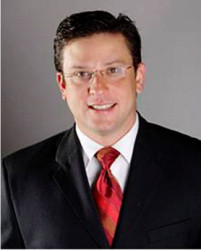NEW YORK/SAN JUAN, Reuters) – Puerto Rico’s new plan to haul itself out of a huge financial hole is long on ifs and buts and short on confident predictions.
Faced with the prospect that its cash will run out within months, the Caribbean island is proposing numerous measures that require support from its divided legislature, action from a U.S. Congress that may not be supportive, and the willingness of a wide range of bondholders to take losses.

It calls for spending cuts that would hit the U.S. territory’s population and a restructuring of its debt that would hurt mom-and-pop investors, as well as U.S. funds. There would also be extensions of excise taxes.
The proposals are all an attempt to close a projected $28 billion funding gap between 2016-2020 as it struggles with a $72 billion debt burden.
Some experts on municipal restructurings said the proposals from a working group established by the Puerto Rican government should force creditors to deal with a clearly worsening situation.
“I sincerely hope that the bondholders will see this report for what it is – a wake up call to come to the table,” said Steven Rhodes, who handled the Detroit bankruptcy when he was a judge, and has been hired to advise Puerto Rico. “I don’t see a way in which bondholders could be made whole.”
But coming only 14 months before Puerto Rico Governor Alejandro Garcia Padilla is up for re-election, and given there is a skeptical Republican-controlled U.S. Congress, the plan is likely to encounter major political obstacles.
“Anything that is perceived by the populace as something that’s taking away rights is going to be difficult to implement on a pre-election cycle,” said Jose Perez-Riera, former secretary of economic development and commerce under former governor Luis Fortuno, and now an advisor at a private economic development group in Puerto Rico.
Devised by Puerto Rico officials and advisors, the plan was based on an influential report, released in June, penned by former International Monetary Fund economists who proposed sweeping cuts and reforms in an attempt to reinvigorate growth.
Showing some signs of the challenges to get to even this point, Garcia Padilla said the plan was appropriately light in two areas: new taxes on the population and demands for sacrifices from workers.
Garcia Padilla presented the plan as the “beginning of a negotiation” with creditors that would result in a “major humanitarian crisis” if a deal wasn’t reached.
“It’s not going to be easy,” said Andrew Wolfe, one of the former IMF economists who wrote the earlier report. “There are so many moving parts here – you are requesting actions from the Federal Government and the creditors.”
FACING A HAIRCUT
Puerto Rico is likely to face an uphill battle with investors as it tries to cut debt, particularly general obligation bonds. They are seen as sacrosanct in the municipal bond market and viewed as having the best protection in a restructuring.
“The debt restructuring is going to be the most difficult, I think, just because you’re asking bondholders to accept less than they thought they were going to get,” said Peter Hayes, head of asset manager BlackRock’s Municipal Bonds Group, which owns various non-government Puerto Rico bonds.
Bondholders are facing a significant haircut on their debt – the working group who devised the plan said only around $5 billion is available to pay principal and interest on the $18 billion of debt coming due in the coming five years. If the government gets its way, the difference is most likely to come from a loss of both interest payments and delayed payments of principal.
That could lead to protracted litigation if some bondholder factions choose to fight.
“In litigation or a negotiation, there will be requests to do more, to cough up more money and yet I do think it’s a fair statement to say that a very high debt burden absolutely has a negative impact on the economy and if you sit back and just continue with austerity it gets worse,” said John Miller, co-head of fixed income for Nuveen Asset Management, which holds $300 million in par value of Puerto Rico bonds which are either insured or non-governmental obligations.
Unlike U.S. municipalities, Puerto Rico cannot seek federal bankruptcy protection under Chapter 9. That makes a restructuring much more complicated than faced the city of Detroit, for example, when it filed for bankruptcy in 2013. Puerto Rico has argued that it needs access to Chapter 9 but bills seeking to allow it have stalled in Congress.
“Chapter 9 provides a focus, a mechanism, an urgency, and a supervision that’s lacking without it,” said Rhodes.
One alternative is a financial control board, proposed in Wednesday’s plan. That board would be selected by the Governor from among nominees chosen by interested parties, the working group said.

